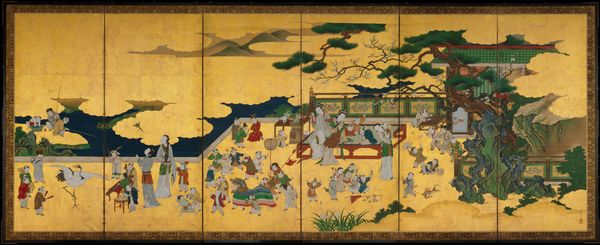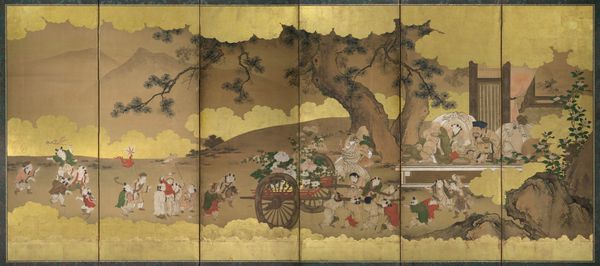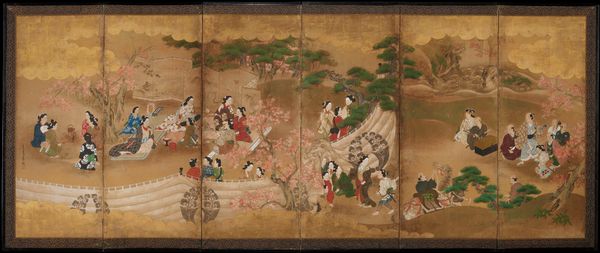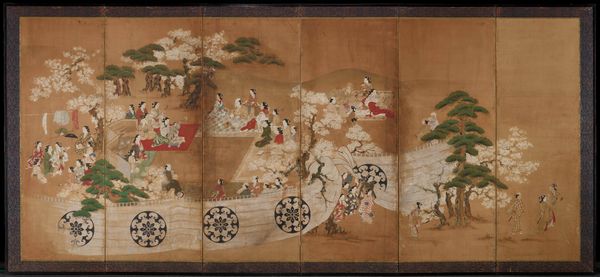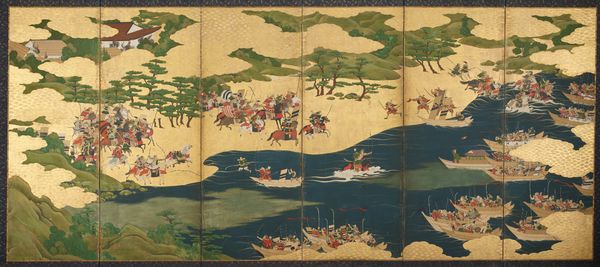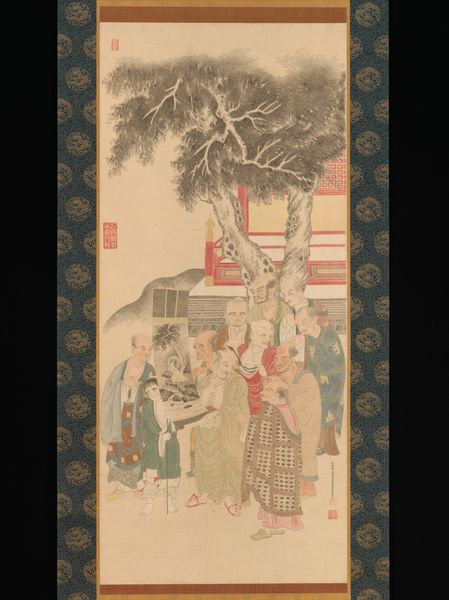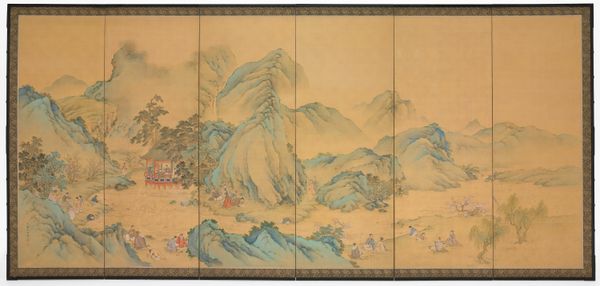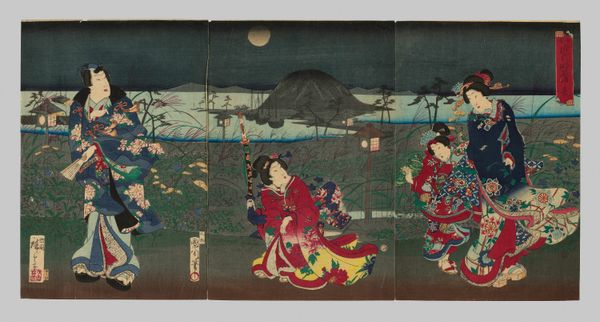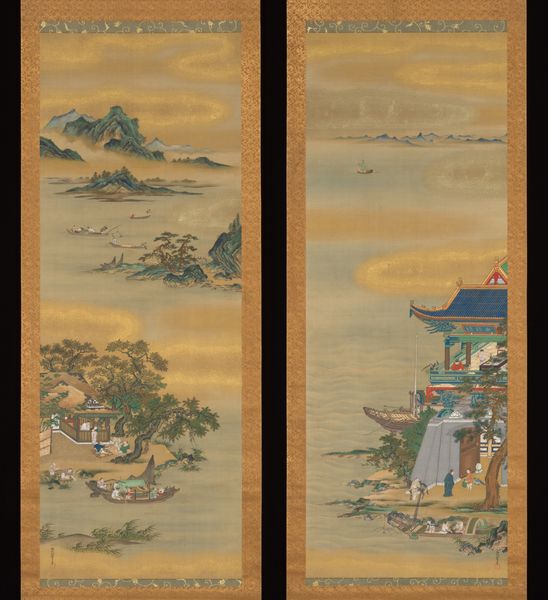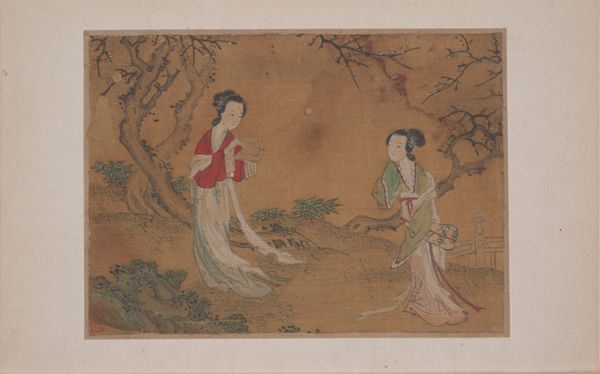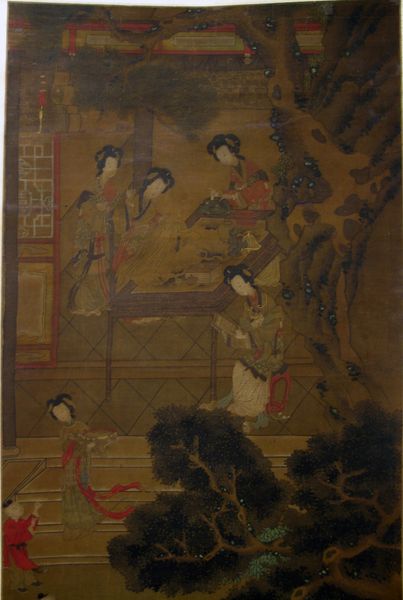
tempera, painting
#
water colours
#
tempera
#
painting
#
asian-art
#
landscape
#
figuration
#
orientalism
#
history-painting
Dimensions: 61 1/2 × 140 1/2 in. (156.21 × 356.87 cm) (image)
Copyright: Public Domain
This screen, attributed to Kano Naganobu, depicts Emperor Ming Huang and Yang Guifei amid a courtly gathering, painted with ink, color, and gold leaf on paper. The pine tree, a prominent motif, stands tall and steadfast, symbolizing longevity and virtue in Chinese culture, much like the oak in European traditions. Observe how the pine's evergreen nature embodies resilience and immortality, a concept echoed in ancient Roman art where laurel wreaths signified eternal glory. This symbol transcends cultural boundaries, reappearing throughout history in various forms, from the Tree of Life in ancient Mesopotamian art to the Yggdrasil in Norse mythology. The emotional resonance of such symbols engages viewers on a deep, subconscious level, tapping into collective memories and shared human experiences. The pine's presence here is not merely decorative; it’s a powerful force, subtly reinforcing the Emperor's authority and the enduring nature of his reign. Over time, its meaning has evolved, yet the underlying theme of steadfastness remains, resurfacing in different contexts to convey resilience.
Comments
minneapolisinstituteofart almost 2 years ago
⋮
The poem Song of Everlasting Sorrow (Changhen ge), by Chinese poet Bai Juyi’s (772–846), tells the story of Emperor Xuanzong (685–762; reigned as Emperor Minghuang) and his breathtakingly beautiful favorite concubine Yang Guifei (719–756). This painting shows Guifei dancing at right in front of the emperor and several attendants. A rebellion in 755 forced the emperor to flee the capital, and angry imperial guards—believing that Yang Guifei was responsible for Xuanzong’s neglect of state affairs—demanded her execution and put her to death. Xuanzong abdicated the throne shortly thereafter, triggering the decline of the dynasty. This tragic love affair became a popular subject among Kano painters like Kano Naganobu (1577–1654), who moved his branch of the Kano House to the capital, Edo (present-day Tokyo), in 1605 and became the first Kano painter to serve as painter-in-attendance to the Tokugawa shoguns.
Join the conversation
Join millions of artists and users on Artera today and experience the ultimate creative platform.
